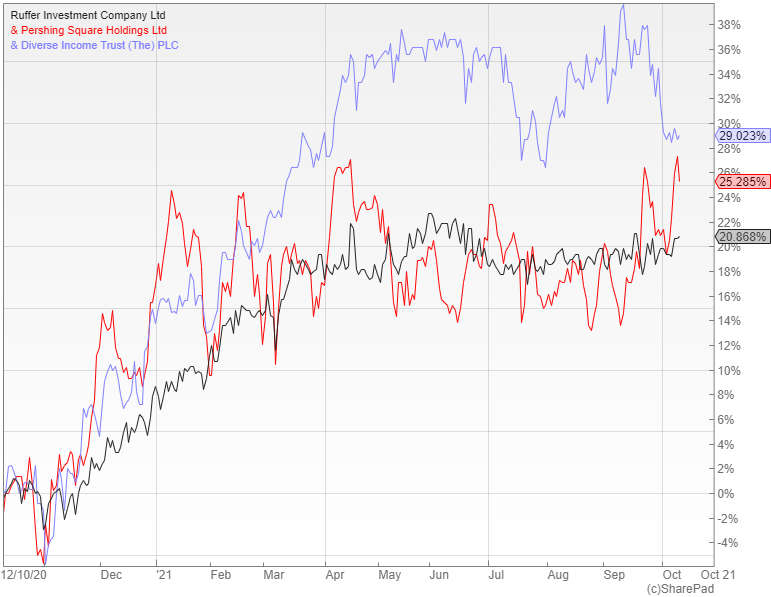Yields are on the rise – could we get a market crash?

The Bank of England has warned that markets are at risk if investors start to worry about the prospects of stagflation, with lower growth, higher inflation and rising interest rates making a toxic combination for asset prices.
A recent report by the Bank’s Financial Policy Committee said that there is evidence that risk-taking remains elevated in a number of markets relative to historic levels. This should come as no surprise as it is largely due to the actions taken by the world’s major economies in response to the pandemic.
By cutting interest rates and using quantitative easing to purchase huge amounts of government bonds and other assets they have pushed up valuations to elevated levels and forced some investors to take on more risk in the search for yield. The problem is that policymakers are getting ready to pull the rug from under their feet by tapering the bond buying programmes to counter the rise in inflation.
If inflation becomes embedded by pushing up labour costs then interest rates may have to rise sooner than expected, which would be a real issue given the high level of debt and slowing economic growth. The Committee has warned that if investors start to price this in then “asset valuations could correct sharply”.
Yields are on the rise
It is the key government bond yields where the risk is taking hold. In the US the 10-year benchmark rate fell back to around 1.2% in late July, but it has since risen to 1.6%. We have also seen a similar picture on this side of the pond where the equivalent gilt yield has climbed from a little over 0.5% in August to 1.21%.
These are big moves for the bond market and are indicative of changing investor expectations. The problem is that higher yields are bad for most equities, bonds and other asset classes and if they spike out of control we could get a serious crash right across the board, including potentially gold.
Protecting against this scenario is extremely difficult, although there are three investment trusts that have taken specific measures to guard against it. These are all well worth considering in the current environment.
Three investment trusts with built-in protection
The most defensive of the three is the Ruffer Investment Trust (LON: RICA), which offers investors an all-weather, multi-asset portfolio. Illiquid strategies and options play an important role in this and provided solid downside protection during last year’s crash with the managers recently topping up their insurance against a spike in bond yields.
Another trust with similar protection in place is the listed hedge fund Pershing Square Holdings (LON: PSH). It owns large stakes in a concentrated portfolio of US-listed stocks, but has taken the precaution of buying a significant notional hedge in the form of interest rate swaptions on 10-year US Treasury bonds. These would generate a huge profit if yields spike with the cash being available to re-invest at knock down valuations.
Alternatively there is the Diverse Income Trust (LON: DIVI) that holds UK dividend-paying stocks of all different market capitalisations and which has recentlyreinstated its ‘put option’ insurance policy that provides some protection against a market crash.The managers have bought a FTSE 100 put with an exercise level of 6,200 and a term to December 2022 that covers 38% of the current portfolio value.

Hi Nick- Ive just been looking at the various reports that PSH put out re their financial position, which are quite numerous but I cant find any mention of the treasury bond rate swaps you have mentioned above. Can you point me the right direction please?
Hi Steve,
Thanks for getting in touch. I based it on the Dec 2020 accounts and the interviews that Ackman gave at the end of March when they came out. I went through all the subsequent monthly updates but the evidence was inconclusive about whether the trade is still in place. I suspect that it is given the tenor of what he was saying but I can’t prove it definitively. As he says, they don’t have to make timely disclosure of their hedging positions.
All the best
Nick
31 Dec 2020 accounts
As of this writing, in addition to investment grade credit hedges, PSH owns very large notional hedges in the form of interest rate swaptions that we purchased beginning in December through early February. Like our credit hedge, our interest rate
swaption position is highly asymmetric; it has a potential payoff that is many multiples of our capital at risk. While this hedge started as a small percentage of the portfolio – at a cost of $157 million it represented 1.4% of assets at that time – it has more
than tripled in value, and now represents 4.2% of the portfolio with a market value of $493 million.11
There is no requirement that we make timely disclosures of our hedging transactions, and the timing of their purchase and sale. As a result, a PSH Replicator has no ability to participate in these investments, which have historically generated large profits and important hedging benefits for PSH.